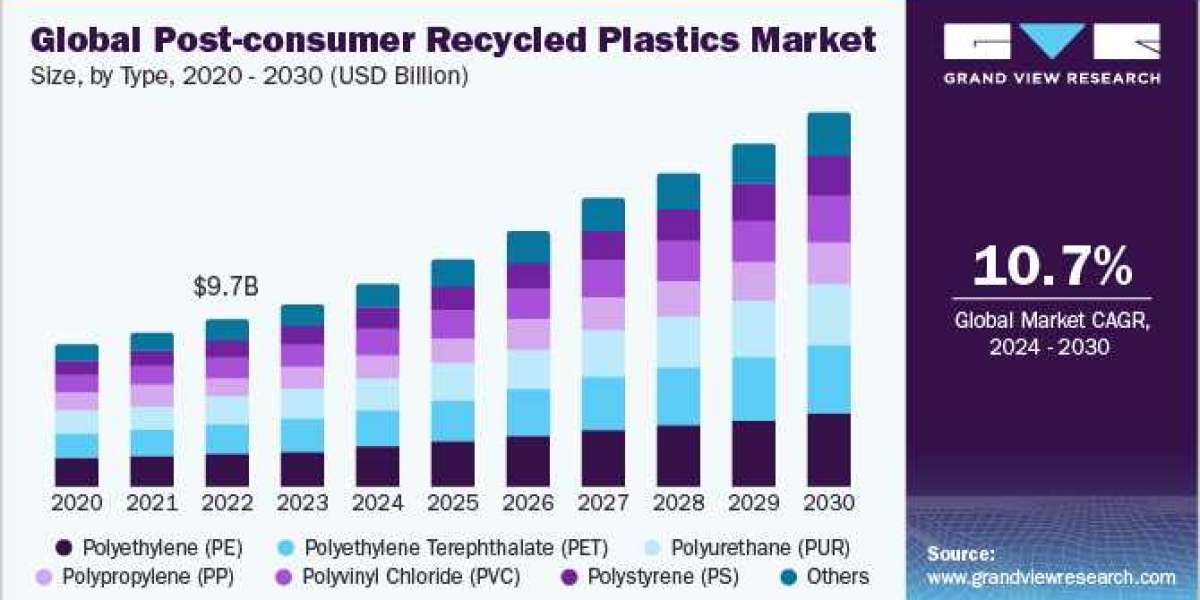The global forklift market is expected to reach USD 154.99 billion by 2030 and is anticipated to expand at a CAGR of 13.5% from 2024 to 2030, according to a new report by Grand View Research, Inc. The e-commerce industry has experienced significant growth due to factors such as increased disposable income, widespread internet access, and enhanced shopping convenience. This surge in online shopping, coupled with unpredictable shipping and shopping patterns, as well as direct-to-customer shipments, has led to a substantial increase in retail sales. Hence, this growth in retail sales has brought about a noticeable transformation in warehouse operations. Warehouses are tasked with fulfilling substantial orders for individual items. This shift necessitates greater efficiency among warehouse workers and forklifts in the processes of locating, selecting, and transporting goods within the warehouse space.
Manufacturers such as Toyota Material Handling and Hyster-Yale Materials Handling, Inc. are focusing on investing heavily in RD activities to manufacture technologically advanced autonomous forklifts. Hyster-Yale Materials Handling, Inc. integrates forklifts with systems such as Enterprise Resource Planning (ERP) and Warehouse Management System (WMS), offering employees a complete real-time view of the automated forklift. In addition, manufacturers aim to reduce the dependency of autonomous forklifts on guide wires, magnets, and lasers. Autonomous forklifts provide stable and consistent performance. These machines may reduce the cost of finding as well as onboarding a new workforce. They decrease product damage and reduce the ergonomic impact of physically demanding and monotonous work tasks for warehouse workers.
Forklift suppliers are constantly upgrading the technologies used in forklifts to provide advanced features, such as operator assist, improved ergonomics, and onboard programming and diagnostics. For instance, in October 2022, Toyota Material Handling (TMH), a forklift manufacturer and warehousing solutions provider, launched an updated version of its 3-Wheel Electric Forklift featuring Toyota Assist's SEnS+ pedestrian detection technology to detect objects and pedestrians within the detection range. Other features included enhanced energy efficiency to allow for a 40% longer run time on a single charge, an auto power mode to detect slopes and automatically switch to a higher power mode to maintain speed, and a lithium-ion battery to minimize maintenance costs and reduce downtime for improved productivity. These enhancements were designed to enable operators to be more productive while incurring a lower cost of ownership over the forklift’s lifespan.
Forklift Market Segmentation
Grand View Research has segmented the global forklift market based on class, power source, load capacity, electric battery type, end-use, and region.
Forklift Class Outlook (Volume Units; Revenue, USD Million, 2018 - 2030)
- Class 1
- Class 2
- Class 3
- Class 4/5
Forklift Power Source Outlook (Volume Units; Revenue, USD Million, 2018 - 2030)
- ICE
- Electric
Forklift Load Capacity Outlook (Revenue, USD Million, 2018 - 2030)
- Below 5 Ton
- 5-15 Ton
- Above 16 Ton
Forklift Electric Battery Type Outlook (Revenue, USD Million, 2018 - 2030)
- Li-ion
- Lead Acid
Forklift End-use Outlook (Revenue, USD Million, 2018 - 2030)
- Industrial
- Logistics
- Chemical
- Food Beverage
- Retail E-Commerce
- Others
Forklift Regional Outlook (Revenue, USD Billion; 2018 - 2030)
- North America
- US
- Canada
- Europe
- UK
- Germany
- France
- Italy
- Spain
- Asia Pacific
- China
- India
- Japan
- Australia
- South Korea
- Latin America
- Brazil
- Mexico
- Argentina
- MEA
- A.E.
- Saudi Arabia
- South Africa
Key Companies profiled:
- Anhui Heli Co., Ltd.
- Clark Material Handing Company, (Clark Equipment Company)
- Crown Equipment Corporation
- Doosan Corporation
- Hangcha Forklift
- Hyster-Yale Materials Handling, Inc.(Hyster-Yale Group, Inc.)
- Jungheinrich AG
- KION Group AG
- Komatsu Ltd.
- Mitsubishi Logisnext Co., Ltd.
- Toyota Motor Corporation (Toyota Material Handling)
Key Forklift Company Insights
Some of the key players operating in the market include Toyota Motor Corporation (Toyota Material Handling); KION Group AG; Jungheinrich AG; Crown Equipment Corporation; and Mitsubishi Logisnext Co., Ltd.
- Mitsubishi Logisnext Co., Ltd is engaged in developing, designing, and selling engine and electric-powered forklifts, local area networks, electric vehicles, automated warehouses, monorails, transportation robots, and other logistics equipment. The company has a strong market presence in North America, Europe, Asia Oceania, and China. For the company Asia is the most potential market for future growth.
- Jungheinrich AG is an intralogistics solutions provider offering a wide product portfolio comprising material handling equipment, digital solutions, automated systems, and related services, including rental services and aftermarket services. The company provides its customers with tailor-made solutions from a single source to help them expand their intralogistics services The company has developed an automated intralogistics workflow using various automated warehouse equipment, mobile robots, and software.
- Combilift, BYD, Hangcha Forklift, UniCarriers Corporation, and Maximal Forklift are some of the emerging market participants in the forklift market.
- Hangcha Forklift is a manufacturer and distributor of material handling equipment. The company serves industries and industry verticals, such as retail, warehousing, food, pharmaceuticals, logistics, and automotive, along with ports terminals. The company maintains a product portfolio of pallet trucks, stackers, reach trucks, order pickers, and forklifts.
- Maximal Forklift is engaged in designing and manufacturing of material handling equipment. The company owns robot welding equipment, forklifts performance test lines, assembly lines, and coating lines, among others. The company’s current product range covers four series of forklifts, including 13.5-32.0T heavy duty forklift, 1.8-5.0T rough terrain forklift, 1.5-compact12T industrial forklift, and warehouse equipment.
Recent Developments
- In August 2023, Jungheinrich AG acquired Magazino, an automated solution provider. The acquisition helped the former company to strengthen position in autonomous mobile robots and related software.
- In September 2023, Hangcha Forklift launched a high-voltage Lithium Battery based electric rough terrain forklift. The forklift ranges from 2.5-3.5 ton and features as reduced noise, zero-emission, and fast charging time.
- In May 2023, Toyota Material Handling announced the launch of three new forklift models. The new forklifts have features such as standard power steering, industrial tow tractor, automatic parking brake, side-entry end rider, and center rider stacker. These features offer the user enhanced performance, efficiency, and a comfortable operating environment in the cabin. The models fall between the 6,000-8,000 lbs. weight classes and are ideal for order picking and cross-warehouse transportation.
- In January 2023, Crown Equipment Corporation announced the launch of an electric counterbalance forklift. The C-B series features electric forklifts equipped with 80-volt motors. The forklifts have applications-oriented ergonomics such as a full suspension adjustable seat, intuitive control system, compact mast, and overhead guard. These features provide enhanced safety and productivity and reduce operator strain and fatigue.
Order a free sample PDF of the Forklift Market Intelligence Study, published by Grand View Research.








